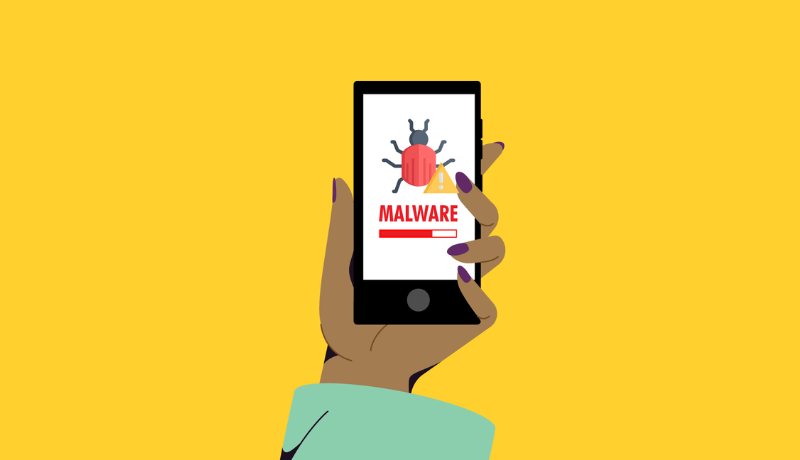
By Ram Narayanan, Country Manager at Check Point Software Technologies, Middle East

Cyberattacks are increasing in number all the time. Indeed, our 2022 Mid-Year Report revealed a 42% global year-on-year increase in attacks. And according to the World Economic Forum’s 2022 Global Risk Report, 95% of cybersecurity issues are traced back to human error. This should be a red flag for all organizations, especially with the transition to remote and hybrid working, where employees are using mobile devices more often. These devices now have access to sensitive company data and direct connectivity to the enterprise network. Combine that with the key ‘human error’ ingredient and you’ll see why mobile devices are such a prime target for cybercriminals.
Despite this, many corporate cybersecurity strategies tend to focus only on traditional endpoints, such as laptops. Do you know if all the mobile devices in your organization are safe from malware? Perhaps you have Mobile Device Management (MDM) and think that’s enough? Unfortunately, MDM does not provide intrusion detection or scan for malware. And with the mobile threat landscape constantly evolving, it’s never been more important to have a robust solution in place. Let’s take a look at the current landscape and what you need to know to stay protected in 2022.
The current mobile malware landscape is a minefield with more and more vulnerabilities being exploited and spyware software being deployed. In our last security report, we noted that NSO Group’s notorious spyware, Pegasus, was wreaking havoc after it was discovered gaining access to the mobile devices of government officials and human rights activists. Unfortunately, 2022 was no different, with Pegasus found to have compromised the devices of Finland’s Ministry of Foreign Affairs, Spain’s Prime Minister as well as multiple devices of UK officials.
In July, Apple introduced a ‘lockdown mode’ for its devices to protect against Pegasus hacks. Even though this mode will increase the security of the users who will use it, but it will also significantly reduce the user experience and limit the functionality of iPhones. However, while Pegasus is one of the most powerful tools currently on the market, the surveillance vendor ecosystem has also become more competitive. For example, Predator, a spyware produced by commercial surveillance company Cytrox, infected iPhones towards the end of 2021 via single click links sent over WhatsApp. As of today, the reach of these tools, let alone their mechanisms, is not yet fully understood by the cyber community despite extensive research efforts.
In terms of techniques, this year we have seen a surge in discovered zero-click attacks. As the name suggests these attacks require no input from the victim before deploying malware. This is because they exploit existing vulnerabilities in already installed apps, allowing threat actors to sneak past verification systems and begin their attack unnoticed. This technique is particularly focused on applications that accept and process data, for example, instant messaging and email platforms.
We saw this in action in April when a new zero-click iMessage exploit leveraged to install Pegasus on iPhones was discovered, running on some early iOS versions. The exploit named HOMAGE was used in a campaign against Catalan officials, journalists and activists.
It’s important to emphasize however, that this technique isn’t just a threat to world leaders but to the everyday person and organizations. Our phones are hubs of confidential data, both personal data such as banking information as well as business data, with many employees now connected to their company’s networks and data via their mobiles, which multiplied over the pandemic with thousands working from home. Cybercriminals are utilizing this silent and persistent practice to gain as much access as possible.
In addition to Zero Click attacks, we have also observed a continuous uplift in the spreading technique known as “Smishing” (SMS Phishing), which uses SMS messages as the attack vector for malware distribution. These attempts often imitate trusted brands or personal contacts to entice the victim to click on a link or share personal details in confidence. This method has proven particularly successful as after one device has been compromised, its entire contact list is up for grabs, creating an endless cycle of possible victims.
This is how the infamous Flubot was commonly deployed. Since its emergence in December 2020, it has been considered the fastest growing Android botnet ever seen. The group is known to be particularly innovative and continuously seeking to improve its variants, having claimed tens of thousands of victims. As such, in June, an international law enforcement operation involving 11 countries led to its infrastructure being taken down and rendering the malware inactive.
Evidently, Flubot’s position could not remain vacant for too long, as a new Android malware operation called MaliBot emerged in the wild soon after. MaliBot is targeting online banking and cryptocurrency wallets in Spain and Italy, looking to replicate the success of its predecessor. At the time of writing, MaliBot is already the third most prevalent mobile malware worldwide, despite being so new, with AlienBot taking the top spot.
Many users turn to application stores to help keep their devices secure, however, unfortunately there are apps that claim to help manage security risks but which often contain malware themselves. The most secured stores like Google Play Store and Apple App Store have thorough review processes to investigate candidate applications before they are uploaded and are held to high security standards once they are admitted onto the platforms. A recent report stated that throughout 2021, Google blocked 1.2 million suspicious applications and Apple blocked 1.6 million. Resourceful cybercriminals continually try to bypass these security measures, though, with different tactics such as manipulating their code to pass through the filters or introduce initially benign applications and add the malicious elements at a later stage.
So, it’s not surprising to still find malicious applications hiding in these stores. In fact, these platforms remain the main infection vectors in mobile threats. For example, Check Point researchers recently analyzed suspicious applications on the Google Play Store and found a few of them masquerading as genuine Anti-Virus solutions, while in reality, once downloaded the apps installed an Android Stealer called SharkBot which steals credentials and banking information. And in February, an Android banking Trojan called Xenomorph was spotted lurking behind a fake productivity application on the Google Play Store. There were over 50,000 downloads.
It must also be noted that due to the pandemic fueling increased use of mobiles for work purposes over the last two years, leveraging mobile phones for work purposes suddenly became the new normal for many users and enterprises, which meant targeting the mobile devices became also the new normal for cybercriminals. Unfortunately, the general awareness of the users of mobile phones with regards to cybersecurity attacks is much lower, and even though, many of them have started leveraging their personal or work-provided mobiles for work purposes, many still do not view it as a sensitive corporate environment, being less careful of malicious emails or links they receive.
Unfortunately, the threat landscape is evolving rapidly, and mobile malware is a significant danger to both personal and enterprise security, especially as mobile devices are vulnerable to several attack vectors, from the application to the network and OS layers. To combat this risk, organizations should also be looking to instill proactive strategies that can keep staff and corporate data safe from a potential attack. This must be a continuous journey as cybercriminals are relentless, always adapting and improving on their tactics.
For mobile users themselves, we recommend additional safety measures such as downloading applications only from certified Google and Apple stores, and even while downloading them there – review the recommendations, and number of downloads of a certain application, to verify that the applications is legitimate. Mobile users should adopt on their mobile phones, the same rules they have as on their desktop devices such as not clicking on links from unknown senders, whether it comes via email, SMS message or messaging applications, and not to download files from untrusted sources.
For some businesses it may be beneficial to employ the help of tools that fortify endpoint resilience and secure remote users. Check Point Harmony for instance, uses real-time threat intelligence to actively guard against zero-day phishing campaigns, and URL filtering to block access to known malicious websites from any browser. It also enforces conditional access, ensuring that if any device does become infected it will be unable to access corporate applications and data. Harmony Mobile achieves all of this – and more – without disrupting employees or hampering their productivity.